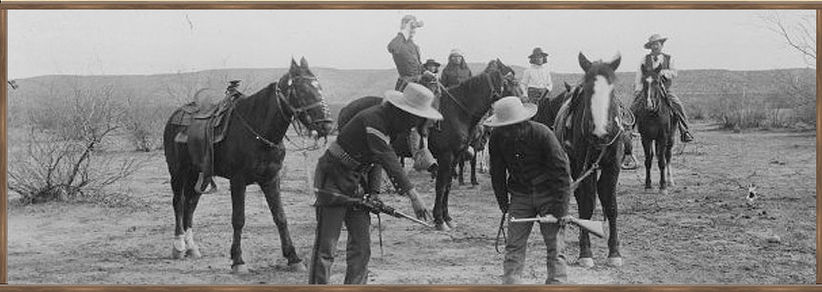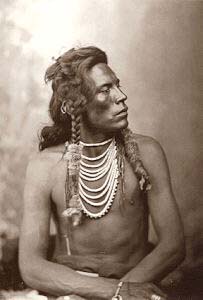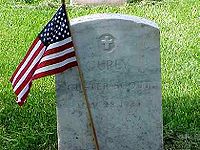|

Native Americans have made up an integral part of U.S. military conflicts since America's beginning. Colonists recruited Indian allies during such instances as the Pequot War from 1634-1638, the Revolutionary War, as well as in War of 1812. Native Americans also fought on both sides during the Civil War, as well as military missions abroad including the most notable, the Codetalkers who served in World War II. The Scouts were active in the American West in the late 1800s and early 1900s. Including those who accompanied General John J. Pershing in 1916 on his expedition to Mexico in pursuit of Pancho Villa. Indian Scouts were officially deactivated in 1947 when their last member retired from the Army at Fort Huachuca, Arizona. For many Indians it was an important form of interaction with white American culture and society their first major encounter with the whites' way of thinking and doing things.
Recruitment and Enlistment
Recruitment of Indian scouts was first authorized on 28 July 1866 by an act of Congress.
"The President is authorized to enlist and employ in the Territories and Indian country a force of Indians not to exceed one thousand to act as scouts, who shall receive the pay and allowances of cavalry soldiers, and be discharged whenever the necessity for further employment is abated, at the discretion of the department commander."
There were different types of scouts, some enlisted as Indian Scouts for brief terms and there were others who were hired as scouts by the U.S. Army. Some individual may have served at different times as a hired scout and an enlisted scout. Prior to the act in 1866 these scouts were considered employees rather than soldiers. Enlistment records and muster rolls, from 1866 to 1912 were in many instances filed by state, some records were broken down by company or military post providing information such as when, where, and by whom the scout was enlisted; period of enlistment; place of birth; age at time of enlistment; physical description; and possibly additional remarks such as discharge information, including date and place of discharge, rank at the time, and if the scout died in service. Indian scouts who were officially enlisted in the army after 1866 were issued old pattern uniforms from surplus stock legally exempt from sale. Their uniforms were worn with less regulation, sometimes mixed with their native dress. In 1870, Captain Bourke of the 3rd calvary described Apache scouts in Arizona as "almost naked, their only clothing being a muslin loin-cloth, a pair of point toed moccasins and a hat of hawk feather." In 1876 a description of Crow Scouts reads that they wore, "an old black army hat with top cut out and sides bound round with feathers, fur and scarlet cloth." With the availability of army clothing some Native scouts took advantage of the availability of the clothing. In 1902 when new regulations were introduced in March the U.S. Scouts received a new more regulated uniform.
Fears
There existed doubts as to whether Indian Scouts would remain faithful or whether they would betray the white soldiers and turn against them in conflict. The Cibicue Apaches were among the first regular Army Scouts. They are also the only recorded 19th-century incident in which Indian scouts turned against the U.S. Army at Cibicue Creek in Arizona Territory. These Apache scouts were asked to campaign against their own kin, resulting in a mutiny against the army soldiers. Three of the scouts were court-martialed and executed.
Reduction of Forces/Pensions
The end of hostilities on the frontier meant a reduction in the number of the Indian scouts needed. Army General Order No. 28 issued on March 9, 1891 reduced the number of scouts to 150, distributed among the different departments. This brought the numbers down to; Department of Arizona, 50, Departments of the Dakota, Platte and Missouri, 25 each; Department of Texas, 15, and Departments of the Columbia, 10. Pension files provide information not only on Indian Scouts but also about his family and others with whom he may have served or who knew him or his wife. Indian Scouts and their widows became eligible for pensions with the passage of an act on March 4, 1917, relating to Indian wars from 1859 to 1891.

Curley, by D.F. Barry, 1878 
Curly's Headstone, Little Big Horn, 2003 Frontier Scouts included; white, native and mixed blood individuals. Native involvement in military service come from different tribes and regions across the United States including Narragansett, Mohegan, Apache, Navajo and native Alaskans (who would become involved in the 1940s). One of the most notable U.S. Army Indian Scouts is, Curley a member of the Crow tribe who became a scout in April 1876 under Colonel John Gibbon. He then joined General Custer. Curley is most often identified as the lone survivor of "Custer's Last Stand." He denied witnessing the battle The Chicago Tribune published an article claiming that Curly had made statements to them about the battle. John F. Finerty claimed that "Curley said that Custer remained alive throughout the greater part of the engagement, animating his men to determined resistance, but about an hour before the close of the fight received a mortal wound." The official website of the Navy lists the American Indian Medal of Honor Winners, including twelve from the nineteenth century. In the 20th century, five American Indians have been among those soldiers to be distinguished by receiving the United States' highest military honor: This honor is given for military heroism "above and beyond the call of duty," exhibiting extraordinary bravery, and for some, making the ultimate sacrifice for their country. The role of Native American women in the U.S. Army is being slowly filled by the efforts of such groups as The Women In Military Service For America Memorial Foundation. It is known of individuals such as Tyonajanegen, an Oneida woman, Sacajawea, a Shoshone, and various female nurses have aided the military as far back as the American Revolution.
For More Information:
Seminole-Negro Indian Scouts
Army Scout U.S. Cavalry
Timeline Indian Scouts
|